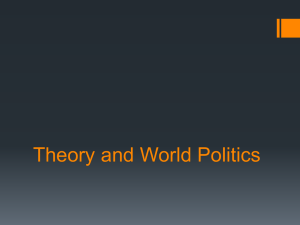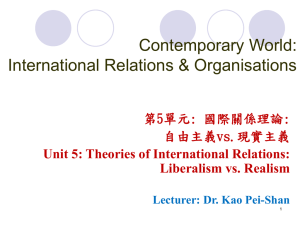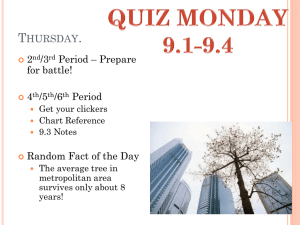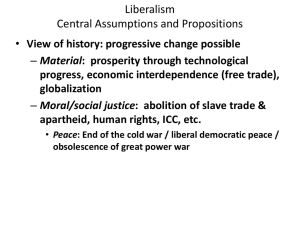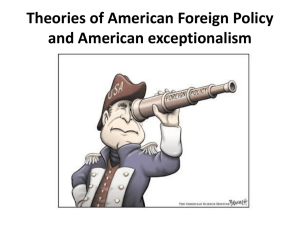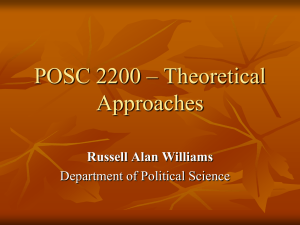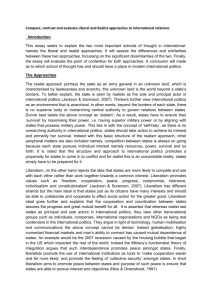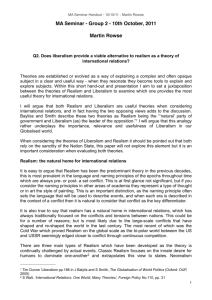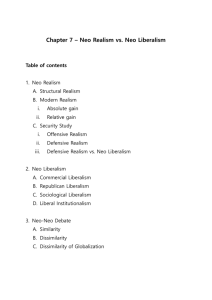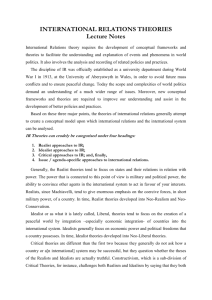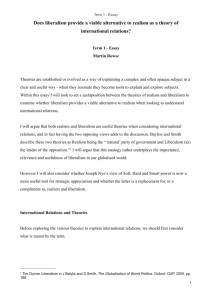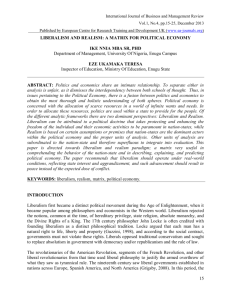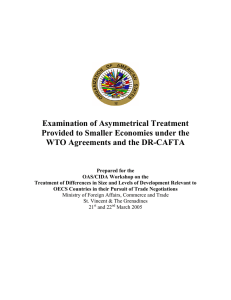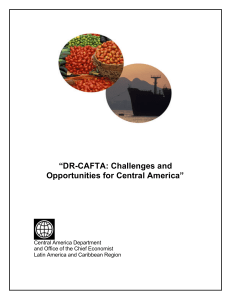International Relations - Study Guide
advertisement
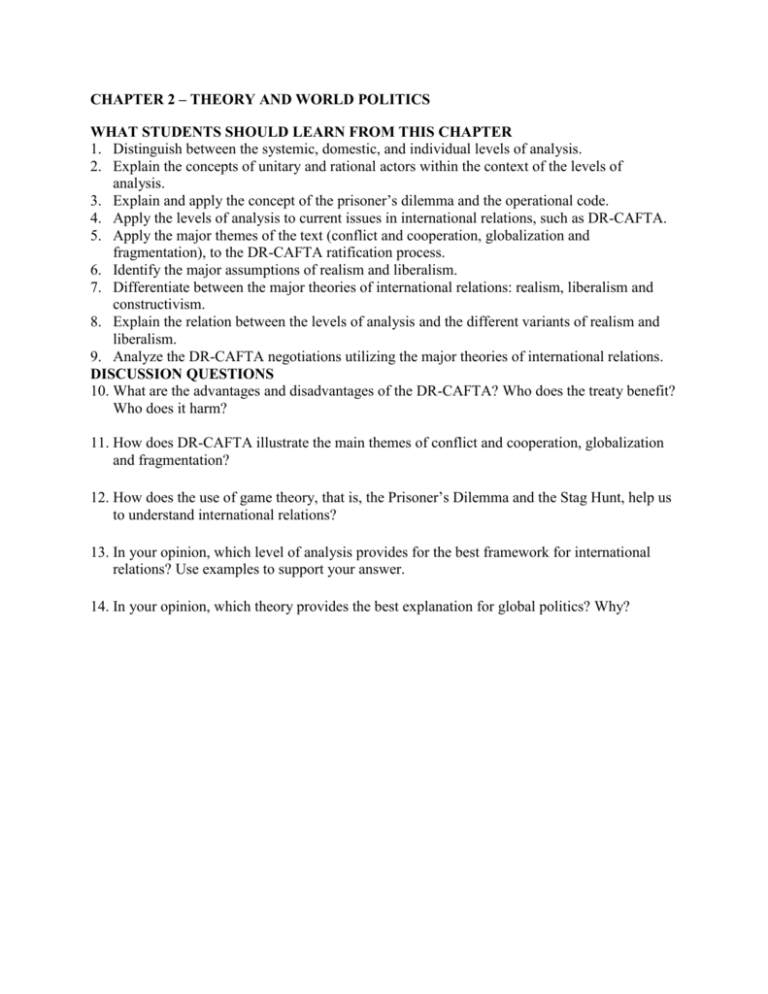
CHAPTER 2 – THEORY AND WORLD POLITICS WHAT STUDENTS SHOULD LEARN FROM THIS CHAPTER 1. Distinguish between the systemic, domestic, and individual levels of analysis. 2. Explain the concepts of unitary and rational actors within the context of the levels of analysis. 3. Explain and apply the concept of the prisoner’s dilemma and the operational code. 4. Apply the levels of analysis to current issues in international relations, such as DR-CAFTA. 5. Apply the major themes of the text (conflict and cooperation, globalization and fragmentation), to the DR-CAFTA ratification process. 6. Identify the major assumptions of realism and liberalism. 7. Differentiate between the major theories of international relations: realism, liberalism and constructivism. 8. Explain the relation between the levels of analysis and the different variants of realism and liberalism. 9. Analyze the DR-CAFTA negotiations utilizing the major theories of international relations. DISCUSSION QUESTIONS 10. What are the advantages and disadvantages of the DR-CAFTA? Who does the treaty benefit? Who does it harm? 11. How does DR-CAFTA illustrate the main themes of conflict and cooperation, globalization and fragmentation? 12. How does the use of game theory, that is, the Prisoner’s Dilemma and the Stag Hunt, help us to understand international relations? 13. In your opinion, which level of analysis provides for the best framework for international relations? Use examples to support your answer. 14. In your opinion, which theory provides the best explanation for global politics? Why?
